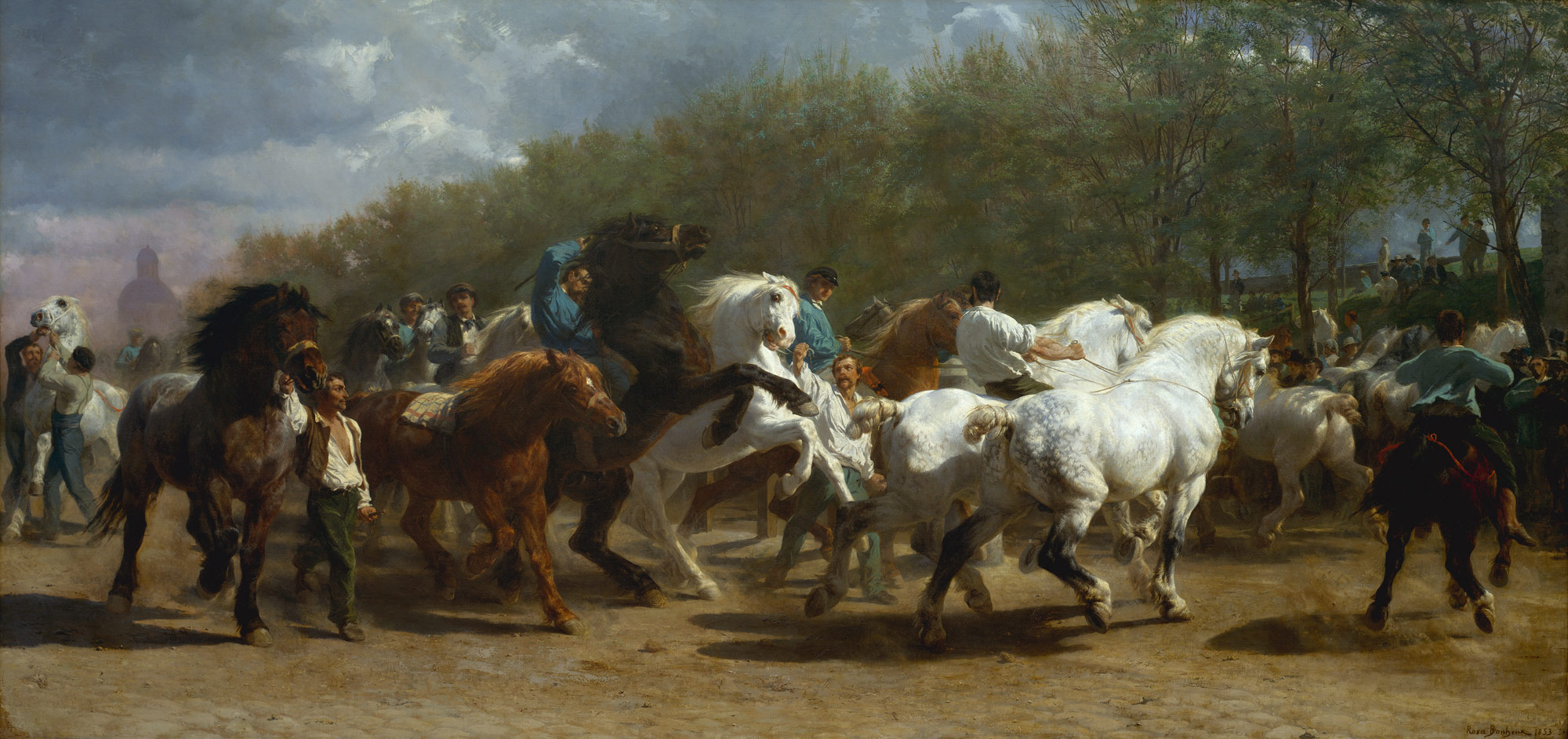 Couching Lion
Couching LionRosa believed that every living creature had a soul and therefore she found a great interest in capturing them, as well as the landscape around them, in her works. She even owned many animals, one of which was a lion! This painting is an oil painting on canvas. It encompasses a lot of shading and value. It also depicts the empirical perspective we were learning about today. There is a clear foreground, middle-ground, and background. The strong lines used allow for heavy detail in the lion, as well as the mountains in the background.

The Horse Fair
This artwork was exhibited at the Salon of 1853 and finished in 1855. It can now be found in the Metropolitan Museum of Art, in New York City. The Dimensions of the painting are 96 1/4 x 199 1/2 in. (244.5 x 506.7 cm). This painting has become one of the Metropolitan Museum's best-known works of art. Rosa sketched twice a week at the horse market in Paris for a year and a half while preparing to make this painting. She actually often dressed like a man to draw less attention to herself. The tree lines in the background are actually very accurate. This picture all encompasses many aspects of shading and value, as well as empirical perspective.
SKETCHES:



Ploughing in the Nivernais
This painting was first exhibited at the Salon of 1848. Now it can be found in the Musée d’Orsay in Paris. It depicts a team of oxen ploughing a field while attended by peasants set against a vast pastoral landscape. It shows the first ploughing or dressing, which was done in early autumn to break the surface of the soil and aerate it during the winter. Dimensions are H. 1.34; W. 2.6 m. There is a very strong foreground with the cattle plowing the soil, and it is set in with the subtle background of the rolling hills and trees in the left corner. The softer background sets a nice tone for the strong foreground. Like all of her other paintings, the shading and value is amazing. For the main fact that she is a realistic artist, the objects and scenes being painted must really look lifelike and have depth.
Citings:
http://www.rehs.com/rosa_bonheur_couching_lion.html
http://www.antiquaprintgallery.com/society-horse-fair-by-rosa-bonheur-sketch-from-1855-94922-p.asp
http://www.metmuseum.org/Collections/search-the-collections/110000135
http://arthistory.about.com/cs/namesbb/p/bonheur.htm
http://www.caroun.com/Research/art/rosabonheur.html
http://www.musee-orsay.fr/en/collections/works-in-focus/painting/commentaire_id/ploughing-in-nevers-2040.html?tx_commentaire_pi1%5BpidLi%5D=509&tx_commentaire_pi1%5Bfrom%5D=841&cHash=60f905d6af
No comments:
Post a Comment